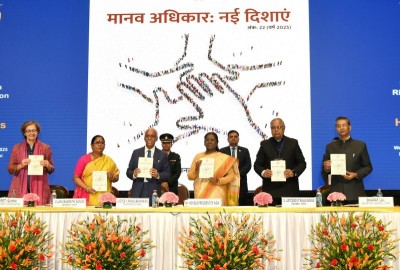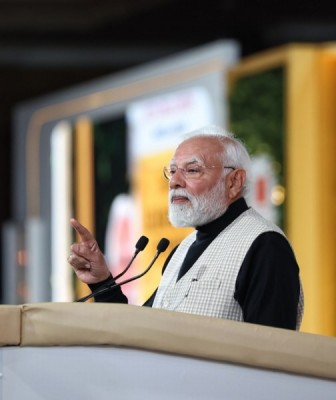 China and Coronavirus
China and Coronavirus
Pandemic: China, Responsibility and Accountability
Even as normal life continues to be disrupted by the spread of COVID-19, the world is slowly realizing the indelible impact the virus has had on jobs, businesses, children and social life.
More than 360,000 lives have been lost over the span of around the first six months of the emergence of the virus and another 5.8 million were shaken by the wrath of the virus, as we see the earth turning into a giant “petri-dish” for the coronavirus. Everyday the figures are only rising.
It is not just the human cost, but the impact on the economy as well, which is expected to have long-standing repercussions.
But where did this all start? Why is there an overwhelming feeling across the world that things could have been handled better? Is this feeling justified? Should any country be made responsible for the suffering? And could it be held legally liable for its omissions and commissions in handling the outbreak?
While efforts are being made to ‘flatten the curve’, many are now beginning to question the emergence of the virus and how its impact could have been minimized. Though the need of the hour is a focus on restoring public health and safety, one must at the same time consider how the outbreak started and whether it could have been preempted or handled better, if we hope to prevent a recurrence of such pandemics.
In such a scenario, China’s role and legal accountability must be discussed if we hope to forestall future outbreaks and at the same time, provide the affected, reparations for their loss.
This paper aims to look at China’s actions – omissions and commissions since the outbreak and analyze how these actions could be used to hold China legally liable for the spread of the pandemic.
An examination of literature from academic sources and journals like “WAR ON THE ROCKS”, legal magazines like the Jurist, as well as analytical pieces by foreign affairs experts in various publications, supplemented with an analysis of various international protocols, treaties and regulations, have been used to frame the paper.
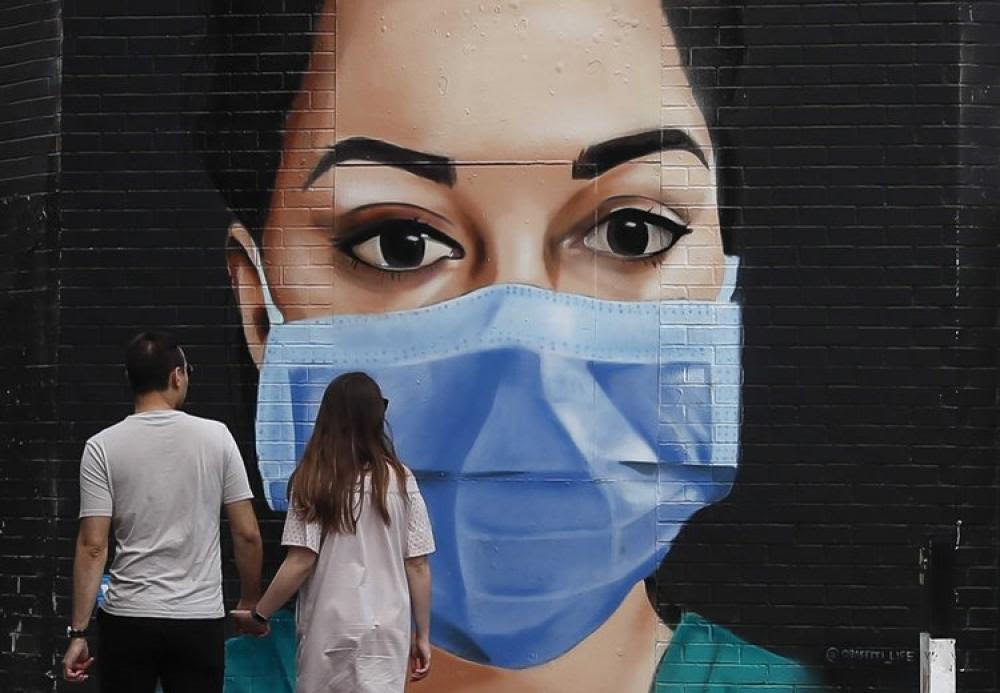
This paper will first discuss China’s actions and how these have led to the spread of the virus across the world. It will then evaluate and examine other instances of cross-border harm, which could serve as a template for proposing action against China.
The paper would then move on to the legal provisions and international protocols that have been violated by Beijing and how these could be used to form a case against it, followed by an assessment of the legal pitfalls of the provisions/protocols discussed.
The foreign policy and economic imperatives faced by the countries which could spearhead any such legal crusade against China would also be discussed. Finally, the paper will elaborate on the best possible way in which China could be held accountable, along with comments on the extent to which this would be achievable.
Emergence of Covid-19 and China’s omissions/commissions
A roaring economy coupled with tremendous economic growth and brisk poverty reduction, the People's Republic of China over the past four decades has managed to achieve complete integration into the world economy and has secured a spot at the top of the global economic pyramid.
Beijing has now entered every corner of the world, cementing its status as a global economic juggernaut. The wealth gained from such integration has enormously boosted infrastructural development, creating the second-largest economy in the world.
However, this booming economy has not brought in the commensurate integration with recognized world protocols and adherence to international laws. It is in this context that China is now facing acrimony from other nations on the emergence of Covid-19 in Wuhan, along with allegations of its failure not just to contain it, but also on its alleged failure to inform the world about the virus in time, as this could have helped them to devise early their plans to combat the virus. This, it is felt, was a deliberate act on China’s part. Was it indeed so?
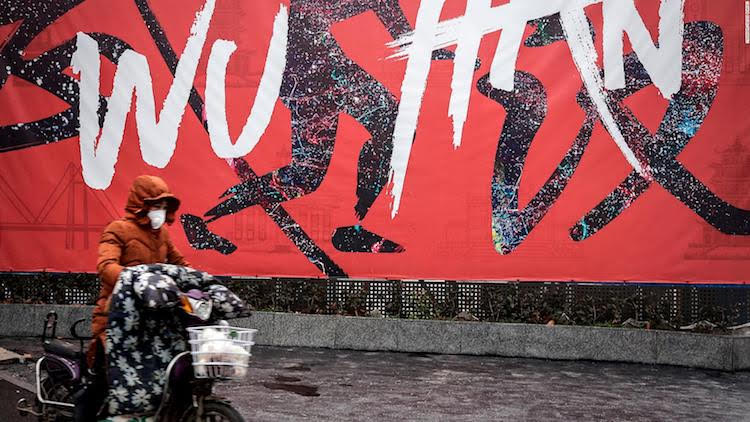
Let us first examine the trajectory of the pandemic, from the detection of the first case to its spread across the world. The first case was reported in Wuhan (capital, Hubei province, China) on November 17, 2019. Soon, one to five cases started being detected every day, eventually surpassing the 250 mark by December 31, 2019.
Despite an alarmingly high rise in cases thereafter, China failed to impose a lockdown until January 22, 2020, further exacerbating the spread of the virus. Dr. Li Wenliang, the first person to warn fellow doctors about the possible outbreak of a SARS (Severe Acute Respiratory Syndrome) like illness in Wuhan, was silenced. Local authorities did not just ignore the wakeup call; they refused to permit the announcement of the outbreak internally and to the public.
They instead acted against Dr. Wenliang, accusing him of making ‘false statements that disturbed public order’. In the meantime, WHO ruled out any indication of person-to-person transmission on January 14, 2020. Subsequently, Dr. Wenliang was diagnosed with COVID on January 30, 2020 and later succumbed to it .
He had posted about COVID on the Chinese social media website, Weibo. In the days that followed, a series of hashtags such as “Wuhan government owes Dr. Wenliang an apology” and “We want freedom of speech” soon started trending on social media. The Chinese Government censored any social media post, which highlighted the emergence of a SARS-like disease.
In addition, the Government detained eight doctors who had posted about the virus on social media and silenced other medical professionals who tried to disclose the emergence of the virus. The Chinese Government provided false assurances to the population preceding the approach of the Lunar New Year celebrations (January 25, 2020) on the outbreak.
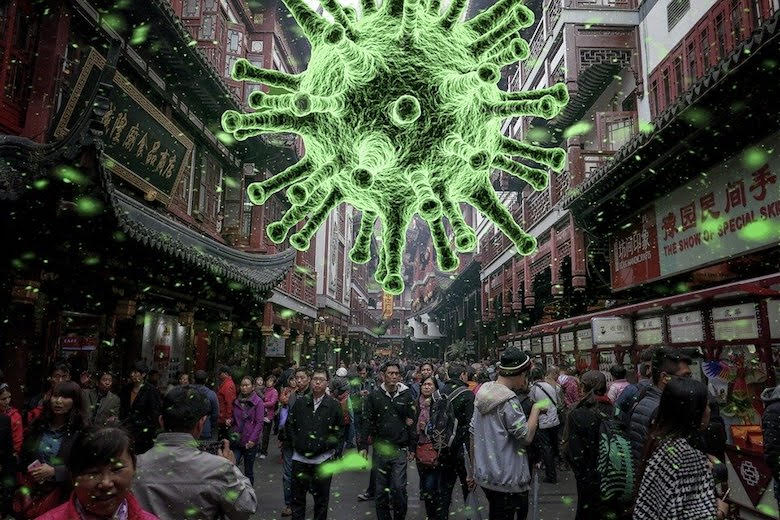
It was only after President Xi Jinping announced the human-to-human transmission of the virus on January 20, 2020, that a lockdown was imposed in two days. However, it proved too late in containing the spread, as almost 4 to 5 million people had already left Wuhan by then.
Many would argue that China failed to streamline its food and drug markets in accordance with essential international laws and regulatory frameworks. These poorly controlled markets have served as the epidemiological origin of some of the worst health crises of the world, besides bringing China face-to-face with death and devastation.
According to researchers, the virus had originated in one such market – the Huanan Seafood Wholesale market. This was closed on January 1, 2020, a day after China reported the emergency to WHO. “Multiple teams have proposed in preprint studies that pangolins may have been an immediate host” of the virus which is most likely to have originated from bats in and around the area, as stated in the journal ‘Scientific American’.
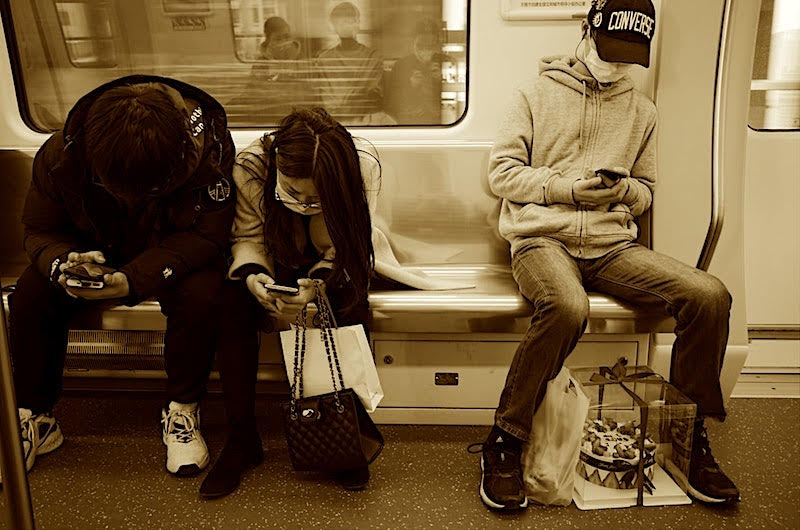
Earlier, the origin of the 2002 SARS virus, which killed almost 800 people, had also been traced to one of China's wet markets and its wildlife trade industry. This had led China to then ban the selling, transportation and breeding of some wild animals. However, this ban lasted just six months.
In a similar exercise, China placed a partial ban on the wet markets this year, but they are now back and running despite calls by the United Nations Convention on Biological Diversity officials for a complete ban on wet markets, not just in China, but also elsewhere in the world.
Another issue, adding fuel to fire, is the fact that the Chinese Wildlife Protection Law has designated wildlife as an economic resource. Although quite a few changes were apparently made in response to previous health emergencies, these were implemented in an extremely lackadaisical manner. It is clear that China’s disinclination to stop its trade of exotic animals, despite proven cases of emergence of viruses, allowed another deadlier virus to hop
onto humans at a wet market in Wuhan and ensnare us in a pandemic like no other.
Evidently, the Chinese authorities proved to be negligent regardless of numerous wakeup calls. Since its entry into the World Trade Organisation in 2001, Beijing has suffered terribly along with the rest of the world due to disastrous health emergencies such as the SARS virus in 2002, the Chinese Milk Scandal of 2002 and the Swine-flu virus (H1N1) virus in 2009.
Drastic reforms which were implemented across the world during such emergencies were primarily dismissed by the Communist Party, even though Chinese citizens had emphasized the need for public health and safety reforms. This is clearly an example of Beijing's autocratic rule and how “the political stranglehold of the ruling party on society enables it to disregard or stifle the kinds of common reform demands that have brought drastic, life-saving reforms to the democratic world over the past century.”
This persistence of the Chinese leaders to disregard much-needed reform has once again led to a public health emergency, an emergency so widespread, that it has wreaked havoc on the lives of the people and economies of nations across the world, filling hospitals and cemeteries with COVID-19 patients.
Principle of Transboundary harm
When examining if and how China could be held legally liable for the spread of the pandemic, an analysis of earlier instances of cross-border harm, for which a nation was held liable, must be examined. A foundational and revolutionary case in contemporary international law on cross border harm is the “Trail Smelter Arbitration.” In the late 1920s, Northwest America’s agriculture and trade went into shock. Crops were scarred and charred, with loggers and scratch farmers being the worst hit.
It was discovered that the ‘shot’ was fired from across the border. A smelter plant in British Columbia, Canada had failed to regulate its sulphur dioxide emissions. In the years that followed, there was considerable debate as to whether Canada should be held liable for failing in its responsibility to control emissions.
The US and Canada eventually decided on international arbitration to settle the debate on liability, issuing penalty and compensation orders. In 1941, an international tribunal was set up to adjudicate on Canada’s failure to responsibly prevent cross border emissions. The tribunal announced two revolutionary legal concepts in the ensuing award. Firstly, “no nation/ government has the right to use and require the territory to cause harm to another’s territory or the property of the persons therein.”
Secondly, “the polluting state has to compensate for the harm caused by polluting activities on their own territory. These judgements laid the foundation for the principle of “Transboundary-harm” and eventually required Canada to pay reparations to the US. This principle was reiterated and adopted by the International Court of Justice in the “Gabcikovo - Nagymaros case”, noting the “obligation of national governments to regulate activities within their jurisdiction that carried the potential to damage the environment of other countries.”
The case involved Hungary (Plaintiff) claiming that Czechoslovakia (Defendant) violated the provisions of a treaty when it appropriated the waters of the Danube River to construct a dam.
The Court held that newly developed norms of environmental law are relevant for the implementation of the Treaty and that the Parties could, by agreement, incorporate them through the application of several of its articles. It found that the Parties, in order to reconcile economic development with protection of the environment, "should look afresh at the effects on the environment of the operation of the Gabcikovo power plant.”
One drawback in the application of this principle was that it applied only to physical pollutants. Nevertheless, in subsequent years, the International Court of Justice in the “Nuclear weapons case”, expanded the definition of the principle of transboundary harm to include “any threat that endangers the living space, the quality of life and the very health of human beings, including generations unborn.”
The General Assembly of the United Nations asked the court to provide its legal opinion on the following question, “Is the threat or use of nuclear weapons in any circumstances permitted under international law?”
Subsequently, the International Court of Justice gave an advisory opinion stating that “there is no source of law, customary or treaty, that explicitly prohibits the possession or even use of nuclear weapons.”
This principle went on to be codified by the International Law Commission and was fused into international legal instruments. It now stands as an integral part in International Law. Given Beijing’s unwillingness to regulate its wet markets and ban wildlife trade, it is irrefutable that this omission falls within the jurisdiction of the principle of ‘Transboundary harm’, which could not only force China to pay reparations, but also embargo its wildlife trade and wet markets.
The principle of “Transboundary harm” is an illustration of how such occurrences have been dealt with in the past. However, given the dynamic nature of law, several new rules, doctrines, protocols, constitutions, international regulations and legal instruments have come up over the years, even as people continued to overlook the fact that Beijing was at the forefront of ignoring and violating these laws.
It is undeniable that these violations will prove to be significant evidence and a major step towards proving China’s liability towards the international community.
Legal provisions in WHO Constitution & International Health Regulations
Moving beyond transboundary harm, this section will examine available regulations and how they have been violated. Based on these, it will elaborate on what legal action could be taken against China, before assessing some drawbacks that these regulations and provisions carry.
The International Health Regulations (IHR) were first adopted by the World Health Assembly in 1969. In 2005, the World Health Assembly, the WHO’s highest decision-making authority adopted the third edition of the International Health Regulations to specifically prevent any form of information asymmetry during public health emergencies, which China has been accused of causing in this case.
Chinese authorities had been flouting these rules to save their political face, failing the very purpose of these regulations, which was to guarantee “the attainment by all peoples of the highest possible level of health” and ensure that nations do not face such emergencies with a blind eye, triggering a breach of Article 1 of the WHO Constitution.
Instead of responsibly and transparently sharing information regarding the virus with the WHO, China decided to censor, deliberately misapprehend and suppress critical information and data about the novel coronavirus. A clear manifestation of this was the delay by the Chinese authorities, who waited till February 14, 2020, nearly two months into the crisis, before revealing that 1700 healthcare workers had been infected.
This data would have been very significant, if provided earlier, in understanding the transmission patterns and to devise strategies to contain the virus. This delay deprived the WHO and Governments across the world of the opportunity to ensure adequate preparation to face the virus.
The most significant of the laws breached would be Articles 21 and 22 of the WHO Constitution. The former “grants the WHO the authority to adopt regulations such as the International Health Regulations.” The latter states that “such regulations should come into effect/ force for all members after due notice has been given.” Thus, one can easily argue that China’s alleged violations of the IHR (listed below) concern the interpretation of the WHO Constitution.
Member states can also claim that China has violated Article 64 of the WHO constitution, which states that “each member shall provide statistical and epidemiological reports in a manner to be determined by the Health Assembly.”
The statistical reports must be in agreement with the Nomenclature Regulations as stated in Article 6 of the Nomenclature Regulations. One could possibly assert that Beijing has violated Article 64 of the WHO Constitution by further violating Articles 7 and 8 of the IHR11. Clause 2 of the former requires “state parties, after notifying the WHO of an event which may constitute a public health emergency of international concern (PHEIC), to communicate to the WHO, timely, accurate and sufficiently detailed public health information available to it, where possible, including the number of cases and deaths.”
The latter, even more far-reaching than the previous one, requires states to “provide the WHO all relevant public health information” if there is enough evidence of a PHEIC. The violation of Article 6 of the IHR, which states that “every party is required to notify the WHO within 24 hours of any event that poses the risk of an international public health emergency”, could also be considered with respect to Article 64 of the WHO Constitution.
Given how China had allegedly suspended early reports of medical staff infections, it led to the WHO believing that human-to-human transmission was not possible. In addition, they withheld the Chinese Government data concerning the number of “asymptomatic infected persons”, an indispensable element in determining the contagiousness of the virus. This is a blatant violation of Article 63 of the WHO Constitution, which underscores that “each member shall communicate promptly to the organisation important laws, regulations, official reports and statistics pertaining the health which have been published in the state concerned.”
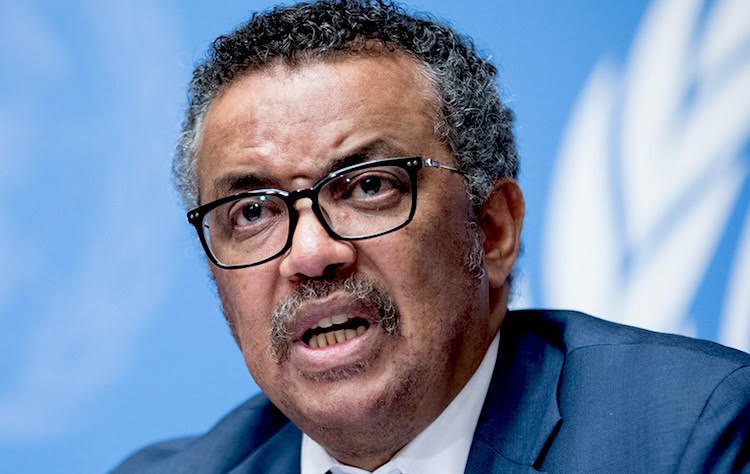
Another provision which one can claim China has violated is Article 37 of the WHO Constitution, which states that “each member of the organisation undertakes to respect the exclusively international character of the [WHO] Director General and the staff and not to seek to influence them.” China blatantly sought to influence the conduct of the Director General and staff. WHO’s continued strong support for China and the delayed announcement of a Public Health Emergency of International Concern along with praise for its handling of the pandemic are clear manifestations of Beijing’s improper influence, as it has continued despite clear evidence of China withholding accurate data and providing doctored statistics.
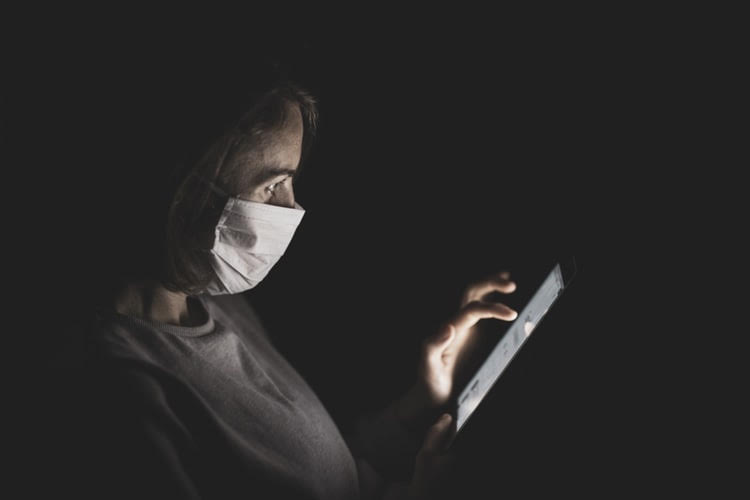
Bringing any country to account for all these violations would turn out to be futile if there is no appropriate dispute settlement mechanism with respect to the WHO which would encompass all these provisions. These mechanisms are provided in Articles 56 and 75 of the IHR and the WHO Constitution. The former provides for “Negotiation, Conciliation, Mediation or any other peaceful means of their own choice”. Failure to resolve the dispute would lead to the Director General deciding for arbitration.
However, this would only be if China consents, which is clearly very questionable. The latter is a jurisdictional aspect which has often been overlooked. It states that “any question or dispute concerning the interpretation or application of this Constitution which is not settled by negotiation or by the Health Assembly shall be referred to the International Court of Justice.” The ICJ has also approved that “article 75 of the WHO constitution provides for the Court’s Jurisdiction.” Although such judgements would not be enforceable directly, they would add weight to arguments based on legal liability.
While considering these legal provisions, one also needs to assess the drawbacks in their application. There are various gaps in these provisions which could lead to China evading any action. Articles 21 and 22 of the WHO constitution do not state the legal obligation of member states to comply with those regulations.
Similarly, a gap exists with respect to the application of Article 63 of the WHO Constitution, which is specific to the interpretation of the word “published”; it is not clear how one would define the word. Should it be interpreted as only official publications made accessible to the public? If so, the Chinese Government’s published documents on the issue would not count as a violation. However, if the numerous social media posts by Chinese doctors warning about the spread and manifestation of the disease are considered, this would undoubtedly count as an obvious violation.
Further, it would not be credible to claim the violation of Article 37 of the WHO Constitution as practically all States always seek to influence intergovernmental or international organisations very frequently. Thus, these approaches, while possibly having the ability to lead to noteworthy triumphs, would also be open to legal challenge.
Provisions against States for wrongful acts Within the Responsibilities of States for Internationally Wrongful Acts (ARSIWA), 2001, are some provisions which could hold China legally liable for its acts in connection with COVID-19. Article 2 of ARSIVA defines the term “wrongful acts” as those which “are attributable to the state and that constitute a breach of an international obligation”. An examination of this definition leads only to two possible conclusions.
Firstly, it is undeniable that the release of the virus and the events that followed are all attributable to the state of China. An “organ of the state” includes “any person or entity that is acting in accordance with national law13.” Be it President Xi himself or local authorities in Wuhan who failed to contain the spread, all are organs of the state of China, making it clear that their conduct is attributable to the state.
Secondly, it is irrefutable that Beijing had triggered the breach of an international obligation and had violated various international agreements. An example of this are the International Health Regulations, 2005 and the WHO Constitution discussed earlier. This is evident from the fact that China had failed to fulfill its “due diligence” responsibilities by failing to disclose timely and accurate details. The norm of due diligence14 has been incorporated into various treaties and customary international law.
This principle can be applied equally to world public health issues.
Similarly, China has also violated Article 14 of ARSIWA, which elaborates about the extension in time of the breach of an international obligation. It has clearly failed to follow the IHR guidelines, besides failing to disclose timely and accurate information regarding the spread in its territory to the WHO, consequently extending its violation over the entire duration during which the act proceeded and remained in non-compliance with international obligations.
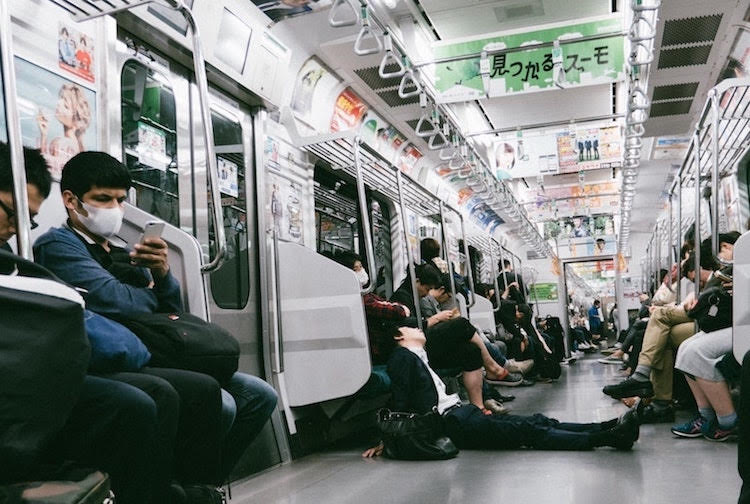
Further, Article 1 of the ARSIWA, which elaborates on “a breach of international law by an act, omission or combination of both, of state entails its international responsibility” also makes China liable. Given how it failed to perform its obligations, one can assert based on ARISWA regulations, that China is liable for starting and exacerbating the spread of the virus. Article 31 of the regulations also point out that “the responsible State is under an obligation to make full reparation for the injury caused by the internationally wrongful act.”
Besides, “Injury includes any damage, whether material or moral, caused by the internationally wrongful act of a State.” According to Article 34, “full reparation for the injury caused by the internationally wrongful act shall take the form of restitution, compensation and satisfaction, either singly or in combination, in accordance with the provisions of this chapter.”
The term “restitution” refers to the entitlement of an injured state to be placed in the same position as it was, before the wrongful act had been committed. A starting point for anyone while applying this principle is to understand that China did not intentionally create a global pandemic; however, it was its malfeasance which was certainly the cause of its spread and intensity across the world.
Provisions in the UN Charter
Considering the harm caused by COVID-19, one can also claim that the spread of the virus is a “threat to international peace and 14 security,” which is a clear violation of Chapter VII15 of the UN Charter.
Such a violation further provides the United Nations Security Council, after determining the existence of the threat under Article 39, the authority under Article 40, “to prevent an aggravation of the situation, before making the recommendations or deciding upon the measures provided for in Article 39, to call upon the parties concerned to comply with such provisional measures as it deems necessary or desirable”.
This could be done in the form of a UNSC resolution or be passed on to the International Court of Justice or an International Tribunal under Chapter XIV of the Charter, in the form of a resolution. However, it is quite conspicuous that China, being a permanent member of the United Nations Security Council, would step in with its “Veto power” and never permit this even to be tabled. Further, without China’s consent, it cannot be produced before an international court or tribunal, in accordance with the principle of state sovereignty16.
Provisions under ICESCR and UDHR
The paper has earlier examined how China triggered a breach of its obligations under the IHR. Similarly, China also breached its obligations under the International Covenant on Economic, Social and Cultural Rights (ICESCR), which provides a right to “the highest attainable standard of physical and mental health” under Article 12.
These provisions also include components which are legally enforceable. Likewise, the Universal Declaration of Human Rights (UDHR), under Article 25, also stipulates the Right to Health. One can assert that these obligations have not been adhered to by China, as it created an atmosphere which deprived one of both mental and physical health. It also failed to regulate food and marketplaces to control transmission of pathogens, as was evident in Wuhan.
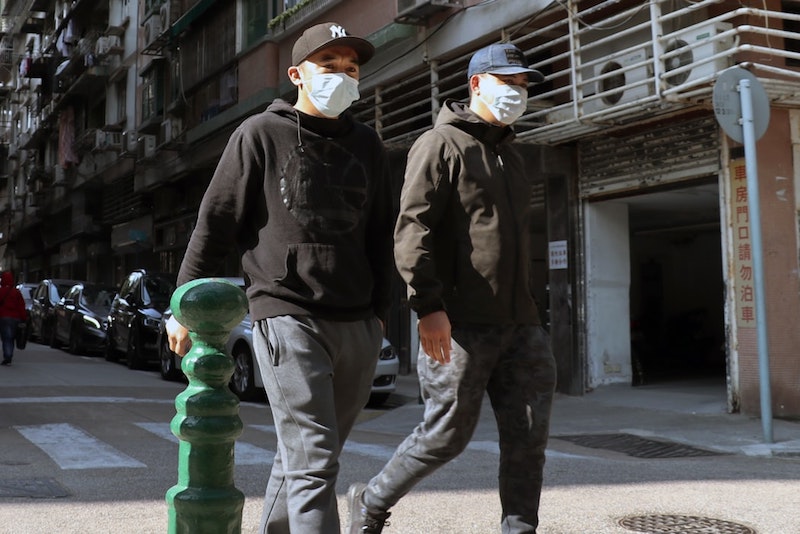
Rome Statute of the International Criminal Court
According to Article 7(1) of the Rome Statute of the International Criminal Court17, as per the eleventh provision, “other inhumane acts of a similar character intentionally causing great suffering or serious injury to body or to mental or physical health” can and will be classified as “crimes against humanity.”
The failure of the Chinese authorities in containing the spread of the virus and the regulation of marketplaces can undoubtedly be used as evidence against China to illustrate the breach of the above stated article. Furthermore, the prosecutor’s office at the ICC has been provided authority to conduct proceedings proprio motu (on its own initiative) based on information of instances or incidents regarding crimes against humanity, which comes under the jurisdiction of the court under Article 15.
Using these provisions however come with a caveat. These statutes apply only to those states which are a party to it. Even though China is not a member state of the ICC, it has constantly been dragged into its affairs and it is being considered whether the ICC has any authority over China. A similar appeal was made to the court asking for an “investigation into the actions of US military personnel in Afghanistan”, notwithstanding the fact that the US is also not a member of the ICC. A recent ruling18 by the ICC in March 2020 has allowed the inquiry of the chief prosecutor with respect to the “Afghanistan war crimes” to proceed. Likewise, this could be done to hold China guilty under these provisions.
Legal Principles on State Responsibility, Customary International Law & Breach of Duty
James Kraska, in “War on the Rocks” emphasised how “China violated International Law on Infectious Diseases, and, under International Principles of State Responsibility, has an obligation to make full reparation for the harm done through, among other things, compensation that could amount to trillions of dollars.”
With respect to the above statement, many lawsuits have been filed in the U.S. claiming such violations. The states of Florida and Missouri were one of the first to have various lawsuits which also include tort claims filed against China. Similarly, Customary International Law also holds that “a state violating International Law has an obligation to make full reparation for the injury caused by the internationally wrongful act.” It is also the breach of a legal duty that China owed to other states under international law.
Lawsuits are also being filed in the US based on negligence and public nuisance claims along with claims based on abnormally hazardous activities. In every case, China and the world would have been spared unnecessary deaths, had China acted in a straightforward manner in accordance with its legal responsibilities and commitments.
Sustainable Development Goals
Goal 3 of the Sustainable Development Goals emphasizes on “ensuring healthy lives and promoting well-being at all ages.” The human suffering brought by the spread of COVID-19 has been exacerbated by countries’ inability to cope with and recover from the virus. Had China exchanged information promptly at the start of the spread, it could have prevented the creation of an atmosphere which deprives one of both mental and physical health, as well as could have given countries a head start in tackling the pandemic.

Drawbacks in applying the international legal provisions
With Beijing being adamant that it has done nothing wrong and have acted responsibly, the actions and remedies discussed in the previous section, which could be taken against China or any other nation as a matter of fact, are fraught with potential challenges and risks.
First, even if a successful case is made against China in an international court, it is certain that China will not “accept” the decision of the court. This is a major downside to the above listed legal remedies. A precedence lies in Beijing’s refusal to accept the verdict of the International Court of Justice when it lost a landmark case over its territorial dispute in the South China Sea against Philippines20.
A former Chinese official called the judgement “nothing more than a piece of paper”, even though China along with Russia adopted a Declaration on the Promotion of International Law a month earlier in June 2016. In such cases, some scholars consider military intervention the only viable alternative. But can a war be fought over a pandemic?
Second, considering how more than six lawsuits have been made against China in the US, the Foreign Sovereign Immunities Act21, 1976, acts as a major impediment in their success. This US statute codifies the principle that “sovereign states may not be sued in courts of other countries.” However, American lawyers are constantly emphasising that the act focuses on commercial offences, helping the lawsuits in finding a way around the act. However, there is still not enough evidence on whether China committed intentionally wrongful acts in the US.
Third, regardless of the allegations against China on breaching international treaties and laws, most of these treaties, even if applied, specify no means of reparation and restitution, and contain no rules for the payment of compensation for damage in other countries. The International Health Regulations (IHR 2005) is one of such treaties, which contain no provisions on the issue.
Fourth, despite it being six months since the start of the spread, no state party has alleged that China triggered a breach of the IHR, with many scholars predicting that no Government would do so. Similarly, no Government has taken a step in making a formal complaint against China on any forum. The reason for this is that, tomorrow, the same could happen with another country and “the shoe could be on the other foot.”
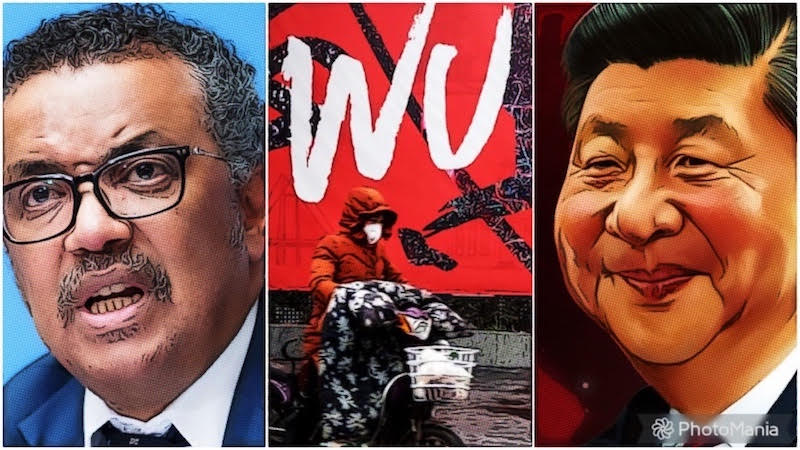
Furthermore, there has not been a single instance, where Tedros Adhanom Ghebreyesys (Director-General, WHO) has disapproved of or criticised China. This stance is highly unlikely to change, given China’s financial contributions to the organization, and despite the US announcement of withdrawal from WHO.
Fifth, Customary International Law and its application discussed in the previous section has never played a significant role earlier in outbreaks of diseases, even when nations have argued that states had violated applicable treaties. States have not seriously pursued compensation against countries accused of breaching treaty obligations to report disease events or refraining from imposing trade or travel measures that have no scientific basis. Such precedence should give us pause before mechanically applying the IHR and the Principles of State Responsibility.
Sixth, the IHR contains a dispute settlement mechanism under Article 56, through which a state party could advance legal claims that China violated its IHR obligations, and under the principles of State Responsibility, it has an obligation to make reparations for the damage caused. However, since the nineteenth century, this mechanism has never been used, a clear indication that states are not interested in legal remedies in such issues. Seventh, the principle of Sovereign Immunity, prevents Governments from being sued in civil or criminal litigations. Thus, no country can be sued without its consent in domestic and international courts. China would therefore need to consent before any litigation is filed against it, which is extremely doubtful.
In addition to the legal loopholes in the available international provisions, there are also important economic and strategic connotations, which could pose a stronger challenge to the possibility of holding China liable.
Although China allegedly violated international legal principles, it is one of the biggest, if not the biggest manufacturing country in the world, besides being the biggest creditor. Most countries are either trading goods with or receiving more investment from China, making it evident that much of the world economy is intricately connected to China.
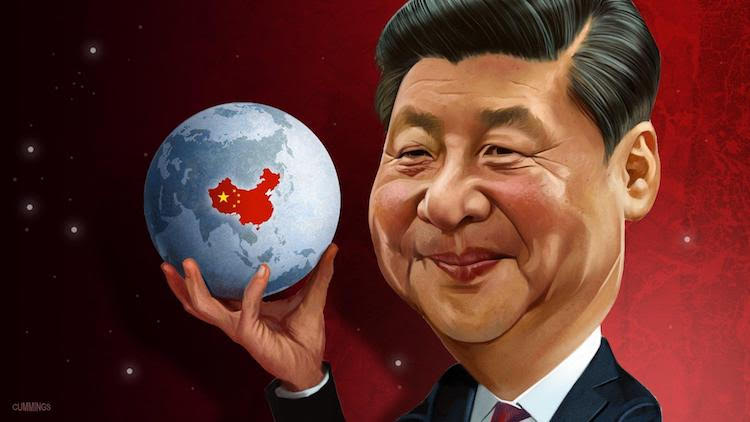
With China being one of the biggest lenders in the world, much of the world is slowly becoming completely beholden to China economically. For instance, China holds about 20% of the total debt in Africa. Blaming Beijing creates the risk of countries harming their own economy, or dependent nations having trouble repaying loans or raising investments in the future. No nation would be ready to take such a risk. The “Chinese string of pearls” is an example of how China made an entry into strategically important places all along India’s coastline, luring the local countries with the promise of large investments and then seized the opportunity of taking over economic control of the installations it constructed. Chinese operations in Sri Lanka, Pakistan and Djibouti are illustrative of China’s efforts to gain an economic stranglehold over these countries.
More significant is the fact that China is one of the world’s leading supplier of medical products, especially Active Pharmaceutical Ingredients (APIs), which would be essential in the fight against the novel coronavirus. Around 40% of global API’s are produced in China22. China is also one of the biggest producers and distributors of medical equipment like surgical masks. In addition, if a vaccine is ever made, it is irrefutable that China will be a major player in its invention, production and distribution. Thus, it would be ill-advised to condemn China’s malfeasance too vociferously. Nations, before pointing fingers, need to make sure that “the cure does not turn out to be worse than the disease.”
Conclusion
In order to move legally against China, countries need to have a strong claim on legal as well as moral grounds against it. There are many other alternatives beyond the realm of law, which could be considered in addition to the legal provisions discussed above. While these may not be connected directly to the violations committed by China, they would provide opportunities for pressurizing it into accepting its role in the spread of the pandemic.
Presently, China chairs four of 15 UN organisations. Actions could include action towards removal of Beijing from such memberships and posts. In addition, states could seize China’s international assets.

This strategy was used successfully against Argentina and Russia to force their compliance. Imposing sanctions could also affect China economically, though the world economy could also get affected to some extent. These could be a signal to other countries and help in preventing future negligence during public health emergencies.
A human rights approach can also be taken, which could include sanctioning specific individuals for specific rights violations. States could also attempt to erode the famous Chinese Internet Firewall that keeps the country’s information system impenetrable and sealed off from the rest of the world.
Injured states could also suspend existing legal obligations or deliberately violate other legal duties owed to China to compel Beijing to fulfill its responsibilities, while addressing the disastrous damages it has perpetrated across the globe. The last resort would be taking the public diplomacy route.
This would however require patience and painstaking diplomatic work. Nevertheless, it would constantly be keeping the spotlight on the Chinese Communist Party and the reprehensible impact it has had in spreading the pandemic around the world, despite lacking legal visibility.
By no means is any alternative simple: each necessitates substantial international cooperation, bearing in mind China’s soaring economic influence and its proclivity for arm twisting countries to get its way. But even if a legal challenge is ineffective or unsuccessful, following such a case in a public forum like the International Court of Justice or the United Nations could lead to significant political victories. As Peter Tzeng said, “it is not every day that one comes across violations of international law that are, allegedly, responsible for the deaths of so many people in so many countries. So, if there is any case where justice should be done, this would certainly be it.”
The world awaits justice!
(This paper is written by Mandheer Singh, a student of Class XII at Modern School, Barakhamba Road, New Delhi and reflects his personal views. He can be contacted at mandheer003@gmail.com )
Support Our Journalism
We cannot do without you.. your contribution supports unbiased journalism
IBNS is not driven by any ism- not wokeism, not racism, not skewed secularism, not hyper right-wing or left liberal ideals, nor by any hardline religious beliefs or hyper nationalism. We want to serve you good old objective news, as they are. We do not judge or preach. We let people decide for themselves. We only try to present factual and well-sourced news.





